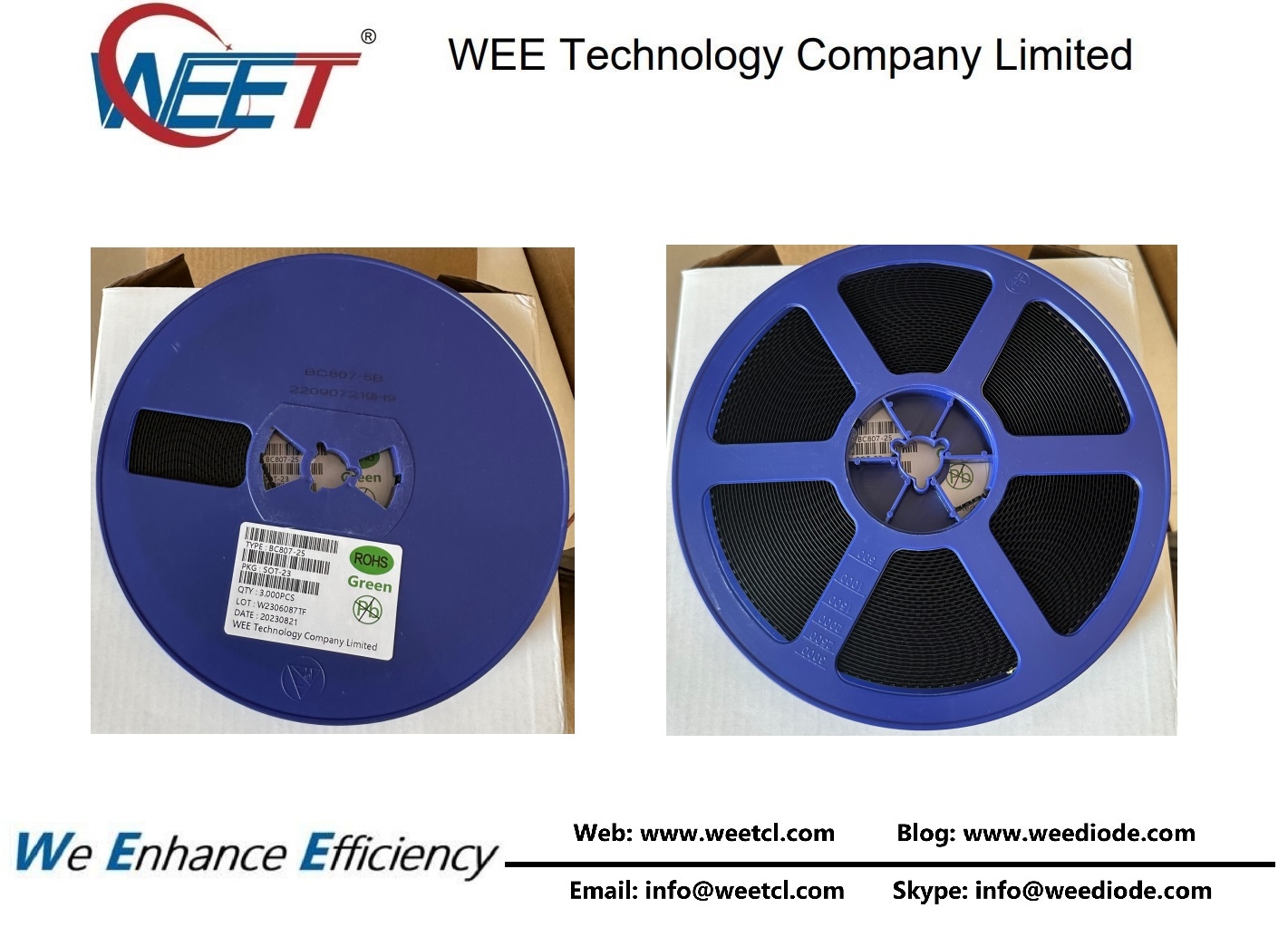BC817 serie NPN and BC807 serie PNP are complementary types:
SOT-23(TO-236) BC817 THRU BC818 (BC817-16, BC817-25, BC817-40, BC818-16, BC818-25, BC818-40) NPN Small Signal Bipolar (BJT) Transistors
Datasheet: https://weetcl.com/pdf/WEET_Transistors_SOT-23_BC817_BC818.pdf
SOT-23(TO-236) BC807 THRU BC808 (BC807-16, BC807-25, BC807-40, BC808-16, BC808-25, BC808-40) PNP Silicon Small (BJT) Transistors
Datasheet: https://weetcl.com/pdf/WEET_Transistors_SOT-23_BC807_BC808.pdf
Applications: switching, AF driver and amplifier
The difference between PNP and NPN, they have different compositions:
PNP type transistor is a transistor composed of two P-type semiconductors sandwiched between one N-type semiconductor;
NPN type transistor is composed of three semiconductors, including two N-type and one P-type semiconductors, with the P-type semiconductor in the middle and two N-type semiconductors on both sides.
The working principle of PNP and NPN is the same, that is, a transistor is a control element mainly used to control the size of the current.
Taking the common emitter connection method as an example, when there is a small change in the base voltage UB, the base current IB will also have a small change. Under the control of the base current IB, the collector current IC will have a large change, and the larger the base current IB, the larger the collector current IC; On the contrary, the smaller the base current, the smaller the collector current, that is, the base current controls the change in collector current. But the change in collector current is much greater than the change in base current, which is the amplification effect of the transistor. The ratio of the change in IC to the change in IB is called the amplification factor of the transistor β, The amplification factor of the transistor β Usually in the tens to hundreds of times.

Wechat: WEETCHINA
Skype, Email: info@weediode.com
YouTube: http://www.youtube.com/c/WEETechnology
Read More